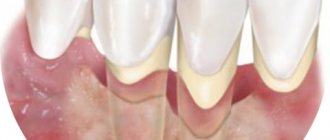- Outpatient department
Outpatient department » - Dermatovenereology
Dermatovenereology »
- It is important to know
It is important to know "
- Syphilis
Syphilis is a classic venereal disease that affects the mucous membranes, skin, internal organs (namely the cardiovascular system, stomach, liver), osteoarticular and nervous systems.
Syphilis is caused by Treponema pallidum, which is a spiral-shaped microbe with great mobility. During reproduction, each treponema pallidum is divided into several parts. Its reproduction period is 33 hours (taking this time into account is important when treating syphilis).
Under no circumstances should you self-medicate syphilis! The patient should be under the supervision of a physician and regularly confirmed by laboratory methods.
Causes and course of the disease
The development of syphilis of the pharynx is possible at all 3 stages of the disease.
Primary lesions are more often in the nasopharynx than in the oropharynx. Moreover, infection can also occur through the use of infected medical instruments (iatrogenic factor of infection).
When the nasopharynx is affected, the most common manifestations of the disease are:
- Enlargement of the lymph nodes of the neck, which in some cases are very pronounced;
- Severe pain when swallowing, which radiates to the ear and is accompanied by congestion.
Causes
Most often, syphilis on the lips in men is caused by the following factors:
- Wounds, abrasions, microcracks, the entire layer of the lips is damaged.
- The pathogen entered the bloodstream after an injection or an unsuccessful operation.
- The baby becomes infected from a sick mother in utero.
The infection can be transmitted sexually through oral sex if partners refuse to use condoms. For some reason, many are sure that oral sex is the safest; it is impossible to contract a sexually transmitted disease. It's a delusion! Syphilis is dangerous because it has a fairly long incubation period. Sometimes it drags on for up to a month, only then makes itself felt. Some partners do not even realize that they are infected with the virus. There is a group of people who know about their illness, but do not tell their partner.
Household infection is common. The cause could be a towel, someone else's razor, dishes, or lipstick. To avoid getting sick, it is important to take your personal hygiene seriously.
Diagnosis of primary syphilis
Hard chancre should be distinguished from cancer of the palatine tonsil and remember that the cancerous ulcer is located deep and has dense, uneven, corroded edges, and its bottom bleeds easily.
To make a correct diagnosis, in addition to the Wasserman reaction, a biopsy of pharyngeal tissue is necessary. A sore throat-like chancre is not difficult to distinguish from a sore throat by the following symptoms: unilateral lesions, absence of pain and such general phenomena as fever and malaise.
For the secondary period of development of syphilis on the mucous membranes of the pharynx and pharynx
characterized by the simultaneous occurrence of similar manifestations on the skin - roseola and papules. Secondary syphilides of the mucous membranes contain a lot of treponemes (the causative agents of syphilis), and therefore patients who have lesions of the mucous membranes of the pharynx, mouth and pharynx pose a serious danger to others.
The disease can have erythematous, erosive and papular forms. Syphilitic erythema is a continuous spot that has sharp boundaries and a bluish-red color. In some cases, slight swelling is observed. Such erythemas are most often localized on the anterior and posterior palatine arches, tongue, tonsils and soft palate.
If the erythema is located on the anterior palatine arches, then it occurs under the guise of a sore throat. This sore throat is one of the early secondary manifestations of syphilis.
Symptoms of syphilis
Syphilis does not manifest itself immediately, but only 3-5 weeks after infection. This period is called incubation. At this time, bacteria spread throughout the body through the flow of lymph and blood, and they multiply. When there are a lot of bacteria and the first signs of the disease appear, then the stage of primary syphilis . At this moment, ulcers appear on the body, in the place where the infection occurred - chancre. This skin lesion appears as a firm, red, painless spot with an erosion (superficial ulcer) at the top. There are usually no inflammatory changes around the chancre.
6-7 weeks after the first signs of syphilis , a rash appears that begins to spread throughout the body. From this moment on, syphilis enters the secondary stage. During this period, various rashes appear and after a while disappear on their own. The tertiary period of syphilis occurs after 5-10 years. Then nodes and tubercles appear on the skin.
, grayish-yellow coating may also form in the middle of the chancre As a rule, the diameter of the chancre is from 10 to 20 mm. Most often, chancre on the genital organs: on the glans penis, in the coronal sulcus, the inner and outer layers of the foreskin; less often - on the labia majora or minora and on the skin of the scrotum and pubis. In addition, chancre can also occur outside the genital organs - most often on the nipples of the mammary glands, the red border of the lips and even on the tonsils in the throat.
How dangerous is syphilis?
In the primary period, when infection with syphilis , chancroid in men can be complicated by paraphimosis, inflammatory phimosis, balanoposthitis, balanitis, gangrenization and phagedenism.
In the secondary period, syphilitic alopecia (at 3-5 months of the disease) can be a complication; joints, bones and periosteum can also be affected.
During the tertiary period, irreversible destructive damage to internal organs is already observed (inflammation of the bone, periosteum, damage to the soft and hard palate, tongue, arches, pharynx with the formation of holes, osteomyelitis, damage to the nervous system, hydrarthrosis and osteoarthrosis, aorta, heart and other organs).
Diagnosis of secondary syphilis
Secondary syphilitic lesions of the pharynx must be distinguished from diseases such as leukoplakia, aphthous stomatitis, diphtheria, ulcerative membranous tonsillitis, and pharyngeal tuberculosis.
Friends! Timely and correct treatment will ensure you a speedy recovery!
In the tertiary period of development of syphilis of the mucous membranes
The most common and important manifestations are lesions of the oral cavity, pharynx and pharynx.
Tertiary lesions of the tongue can manifest themselves in the form of isolated gummas (soft tumor), which develop in its thickness, or as diffuse infiltration, which covers most of the tongue, and then turns into diffuse sclerosis (pronounced coarsening) of the mucous membrane and muscle tissue.
But most often the location of the tertiary form of syphilides is the soft and hard palate. Most often in this case there is a diffuse form, but in some cases limited gummous tumors are observed. The pathological process begins with virtually no pain and is a diffuse swelling, and then thickening and compaction of the soft palate, which gradually loses its mobility. Infiltrates usually have a bluish-red color. Then the gummas disintegrate and deep ulcers are formed, which have sharply defined edges.
Make an appointment right now!
Call us by phone or use the feedback form
Sign up
Tertiary lesions in the pharynx can take the form of tubercular syphilis or gummous lesions, which are mainly localized on the vault of the pharynx and its posterior wall. Such lesions are very rarely detected before ulceration, because they practically do not bother the patient.
After the healing process of gummous-ulcerative lesions, dense scars appear, as well as adhesions between the arches, walls of the pharynx and the soft palate, which often causes atresia (fusion) of the pharynx and disruption of the swallowing process.
“Know syphilis in all its manifestations and connections, and everything else will follow in clinical work” Sir William Osper, 1897
Syphilis , or lues (syphilis, lues) is a general infectious disease, prone without treatment to chronicity and relapse, capable of affecting all organs and systems and transmitted in utero.
What causes syphilis?
Syphilis is caused by the spirochete Treponema pallidum, ssp. pallidum, which belongs to the order spirochaetales.
Endemic Treponema pallidum is a subspecies that causes bejel, or endemic syphilis. Other pathogenic treponemes include Treponema pallidum, ssp.pertenue, which causes frabesia, and Treponema carateum, which causes pinthorn. There are other types of treponema, both free-living and those that infect animals.
How did syphilis appear?
Opinions about the origin of syphilis are contradictory. An epidemic of syphilis devastated Europe in the last decade of the 15th century, when it was called the “major smallpox,” as opposed to the “small smallpox.” Since the epidemic coincided with the return of Columbus from America (1493), many reputable scientists believe that syphilis was introduced from the West Indies. It is noteworthy that Columbus himself apparently died from syphilitic aortitis.
Another theory is that syphilis already existed in the Old World, but it became more widespread during the wars that began shortly after Columbus returned to Europe.
How is syphilis transmitted?
Typically through sexual contact, but it can be congenital or transmitted through blood transfusion.
The microorganism is sensitive to various influences and quickly dies from heat, cold, soap, disinfection and drying.
Due to the high sensitivity of the spirochete, the possibility of transmission through a contaminated toilet seat is extremely unlikely. What is the likelihood of contracting syphilis through sexual contact with an infected partner?
Typical Gunter's chancre (chancroid, nelcus durum)
This is a painless ulcer with a dense infiltrated edge that occurs at the site of treponema penetration. Its diameter can range from several millimeters to several centimeters.
Concomitant unilateral or bilateral regional lymphadenitis develops in 50-85% of patients approximately a week after the appearance of the primary ulcer. It should be noted that up to 50% of all chancre are atypical.
Painful ulcers, multiple ulcers, secondarily infected, non-indulgent ulcers - all these are varieties of classic chancre.
In some patients, the primary infection is asymptomatic or undetected, especially in women in whom the chancre may be internal.
Time frame for the development of primary chancre after the introduction of a microorganism
The time of appearance depends on the number of introduced microorganisms. Primary chancre usually occurs after 10-90 days. On average this period is about three weeks. Microorganisms enter regional lymph nodes in the first few hours.
Can chancre be located outside the genitals?
The most common extragenital lesions are observed on the lips,
in the anal area, which is associated with oral and anal sexual intercourse.
The latter can lead to the appearance of chancre in the rectum or colon at a distance of up to 20 cm from the anus.
Cases of chancre localization on the tongue, tonsils, vein, chin, nipple, navel, armpit and even on the lower limb have been described.
Diagnosing extragenital chancre requires great professionalism!
Diagnosis of primary syphilis
The most specific and rapid method for diagnosing primary syphilis is the detection of the spirochete by an experienced specialist using dark-field microscopy. This test is not always available to doctors and usually requires referral of the patient to a health center or sexually transmitted disease clinic.
In early primary syphilis, the VDRL (Venereal Disease Research Laboratory) test and the Rapid plasma regain - RPR reagin test give a negative result, so they must be repeated every week for a month, after which they can be considered negative.
The fluorescent spirochetal antibody absorption test (FIA-absorbance test) is more sensitive and becomes positive earlier.
Secondary syphilis
Characterized by the spread of syphilitic infection in the human body. The skin, mucous membranes, lymph nodes, internal organs, bones, and central nervous system are affected. The course of secondary syphilis is “paroxysmal”.
The rashes of each of the attacks of the secondary period last 1.5-2 months, then disappear and reappear.
There are:
secondary fresh syphilis
secondary latent syphilis
secondary recurrent syphilis
In secondary syphilis, rashes on the skin and mucous membranes have the following features:
they are ubiquitous
benign
no temperature
resistant to local treatment
disappear quickly after antisyphilitic treatment is prescribed
One of the most important symptoms of secondary syphilis is polyadenitis - damage to the lymph nodes.
They are easy to palpate in the armpits, groin areas, and elbow bends.
The most important specific signs of secondary syphilis include:
syphilitic hepatitis (liver enlargement, fever, jaundice)
syphilitic gastritis
syphilitic nephritis
syphilitic myocarditis
Damage to the nervous system in secondary syphilis is called neurosyphilis. Damage to the meninges and blood vessels is typical.
When analyzing cerebrospinal fluid, syphilitic meningitis (often asymptomatic) is detected, as well as syphilis of the brain vessels (meningovascular syphilis), less often - syphilitic neuritis and polyneuritis, neuralgia. In the secondary period of syphilis: the Wasserman reaction (RW) with secondary fresh syphilis is observed in 100% of cases; with secondary relapse in 98-100%.
Tertiary syphilis
It develops in 40% of patients in the 3-4th year of the disease and continues indefinitely. The transition of the disease to the tertiary period is facilitated by inadequate treatment or its absence in the previous stages of syphilis, severe concomitant diseases, poor living conditions, etc.
Manifestations of tertiary syphilis are often accompanied by indelible disfigurement of the patient’s appearance,
severe disorders in organs and systems, leading to disability and often death.
Features of tertiary syphilis:
powerful inflammatory infiltrates in the form of tubercles and gummas, prone to decay;
limited lesions;
wavy, intermittent course (manifestations of tertiary syphilis, having existed for several months, undergo spontaneous regression, followed by a period of relative dormancy of the infection).
Highlight:
tertiary active syphilis
tertiary latent syphilis
Treatment of syphilis
Treatment of syphilis is carried out after diagnosis. It is necessary to start treatment as early as possible, which determines the importance of timely diagnosis and the possibility of hospitalization of the patient. Therapy should be comprehensive; in addition to specific drugs acting directly on Treponema pallidum, it is necessary, especially in the later stages of syphilis, to widely use methods of nonspecific pathogenetic therapy aimed at increasing the body's resistance and eliminating the identified pathology.
During the treatment process, careful monitoring of the patient’s general condition and tolerability of the drugs used is necessary. A general blood and urine test is done once every 10 days. Modern methods of treating patients with syphilis are quite effective and provide a cure for almost all patients. Negative results of RIBT and RIF after the end of treatment are one of the criteria for its effectiveness.
After completion of full treatment, the patient must be under clinical observation, the duration of which depends on the stage of the disease before treatment (usually for 3 years).
Diagnosis of tertiary syphilis
Tertiary syphilis of the pharynx must be differentiated from tuberculosis, scleroma and malignant neoplasms of the pharynx. Gummous ulcerations are painless and have sharply defined edges and a bluish-red color. They do not cause the disorders that occur with pharyngeal tuberculosis. The bottom of a syphilitic ulcer is shiny, smooth and shaped like a crater. For a final diagnosis, histological examination is necessary.
Diagnostic methods
After consulting a doctor, the following methods are used to determine syphilis in men and women:
- Treponema pallidum test;
- Wasserman reaction;
- Treponema immobilization;
- Immune fluorescence.
Diagnosis of the first stage
At the end of the first period, the following unpleasant symptoms appear: high fever, muscle weakness, bone aches, and terrible headaches. It is very important for an infectious disease specialist to distinguish a traumatic ulcer from a chancre.
Also, at the first stage, labial syphilis is often confused with herpes. With this infection, severe pain, swelling, and blisters appear, which is not typical for syphilis. Chancre is somewhat reminiscent of pyoderma, only with it there is severe pain and pus is released. Some people confuse syphilis with aphthous stomatitis, which causes inflammation of the mucous membrane and painful ulcers. It is important to differentiate chancre from cancer that deeply affects the lips.
Diagnosis of the second stage
The secondary form is difficult to diagnose. A scraping taken from the papules, as well as a serological reaction, will help determine the infection. The doctor prescribes all the necessary tests, because syphilis in its symptoms resembles other ailments:
- Leukoplakia, in which papules appear on the lips.
- Candidiasis. The difference here is that after removing the plaque, erosions appear in case of candidiasis, and treponema is found in case of syphilis.
- Exudative erythema.
Is it possible to diagnose the tertiary form?
It is almost always difficult to identify treponema in gummas and tubercles. In this case, the indicators RIBT and RIF are taken into account. It is important to distinguish syphilitic gummas from aphthous stomatitis, tuberculosis, and traumatic ulcers.
Manifestations of syphilis in the primary period of the disease
At the end of the incubation period, primary syphiloma (chancroid, hard ulcer) appears at the site of introduction of pale treponema. Most often single (in 60 - 90% of cases).
Hard chancre in the form of erosion has a smooth bottom, flat edges and clear boundaries. The infiltrate at its base is weakly expressed, which is why primary syphiloma is hardly noticeable upon examination.
Hard ulcerative chancre in syphilis has a hard infiltrate at the base, for which it is called a “hard” ulcer or hard chancre. With a deep ulcer, the infiltrate at the base is powerful, has a cartilaginous structure, the bottom of such ulcers is dirty yellow, often with small hemorrhages, and the discharge from the ulcers is copious. When localized on open areas of the skin, hard chancre quickly drys out, becomes crusty and becomes similar to pyodermic (pustular) elements. When localized in the corners of the mouth, the chancre resembles a crack.
Rice. 2. The photo shows a hard chancre on the lips.
Diagnosis of syphilis on the lips
Many are well aware of the fact that the gold standard for diagnosis is a positive Wasserman reaction. There is certainly some truth in this. But not many people know that RW analysis becomes reliable only when the virus persists for about 1 month. Therefore, one negative test result a week after sexual intercourse on the side does not provide any guarantees.
In the diagnosis of syphilis, clinical manifestations are extremely important. It is the identification of hard chancre or elements of the rash that should be regarded as the first signal that the patient has syphilis.
Manifestations of syphilis in the tertiary period of the disease
Gummas and tubercular syphilide are the most common manifestations of tertiary syphilis. They appear on the skin of the face and scalp, mucous membranes of the oral cavity, pharynx and larynx, mucous membrane, cartilage and bone structures of the nose. The disease is characterized by a severe course.
In the case of untreated syphilis, gumma appears immediately after the secondary period. With insufficiently effective treatment, tertiary syphilis on the face appears after a hidden (latent) period, the duration of which is years and decades. Gummas compress and, when disintegrating, destroy organs in the places where they are located, disrupting their function and disfiguring a person’s appearance. The disease often leads the patient to disability and even death.
The rashes are often isolated and practically not contagious. Without treatment, they heal for a long time (within 4 - 6 months). In place of syphilides, retracted, star-shaped, disfiguring scars remain. Under the influence of specific treatment, gumma and tubercular syphilide heal quickly.
Rice. 4. The photo shows the complete destruction of nasal cartilage due to syphilis.
Prevention
It is easier to protect yourself from a serious illness than to treat it. In this case, it is necessary to adhere to the following measures:
- Use contraception. A condom is considered an effective method;
- Avoid indiscriminate sex; it is better to give preference to one sexual partner;
- Everyone in the house should have their own dishes. This way you can not only protect yourself from lip syphilis, but also other viral infections. Try to wash dishes thoroughly rather than rinsing them;
- In a public place, it is better to use disposable tableware;
- Do not give or take cosmetics from strangers. You can get seriously ill after using lipstick. This is especially true for those who like to visit a beauty salon;
- A washcloth and bath towel should not be shared. Everyone should have their own hygiene product.
Syphilis on the lips is an unpleasant disease; it lasts a long time in both women and men. The disease can be prevented by following simple recommendations. Take care of your health!
Manifestations of syphilis during the secondary period of the disease
The rash on the face and scalp with secondary syphilis looks like roseola (spots), papules, vesicles and pustules. During the initial (fresh) rash, it is abundant, brightly colored, and often symmetrical. With secondary recurrent syphilis, the rash is not profuse. At the end of the secondary period, secondary syphilomas may be single.
Features of the rash on the face:
- high prevalence
- sudden appearance
- polymorphism (different types of rashes),
- clear boundaries
- lack of reaction of surrounding tissues,
- lack of subjective sensations,
- high infectiousness,
- benign course.
Rice. 3. Syphilis on the face - papular syphilide of the face.
Treatment methods
The venereologist prescribes antimicrobial drugs, and always regulates the dosage. After a course of medication, the patient undergoes a blood test. The drug is administered invasively after an equal period of time.
During treatment with antimicrobial drugs, the patient’s blood must be examined step by step. The drug is administered after the same period of time.
Of no small importance is a restorative course of therapy so that the patient is rehabilitated after prolonged use of antibiotics, which destroy not only pathogenic flora, but also beneficial microorganisms. In this situation, lactobacilli and vitamin complexes are prescribed.
During treatment, you should avoid sexual intercourse. Only after repeated tests show the absence of infection in the blood can we talk about a complete cure. If a pathogen is identified, it is imperative to inform your sexual partner about this, and he must also undergo a course of therapy. It happens that in men the symptoms are not expressed, and subsequently he infects his partner.










